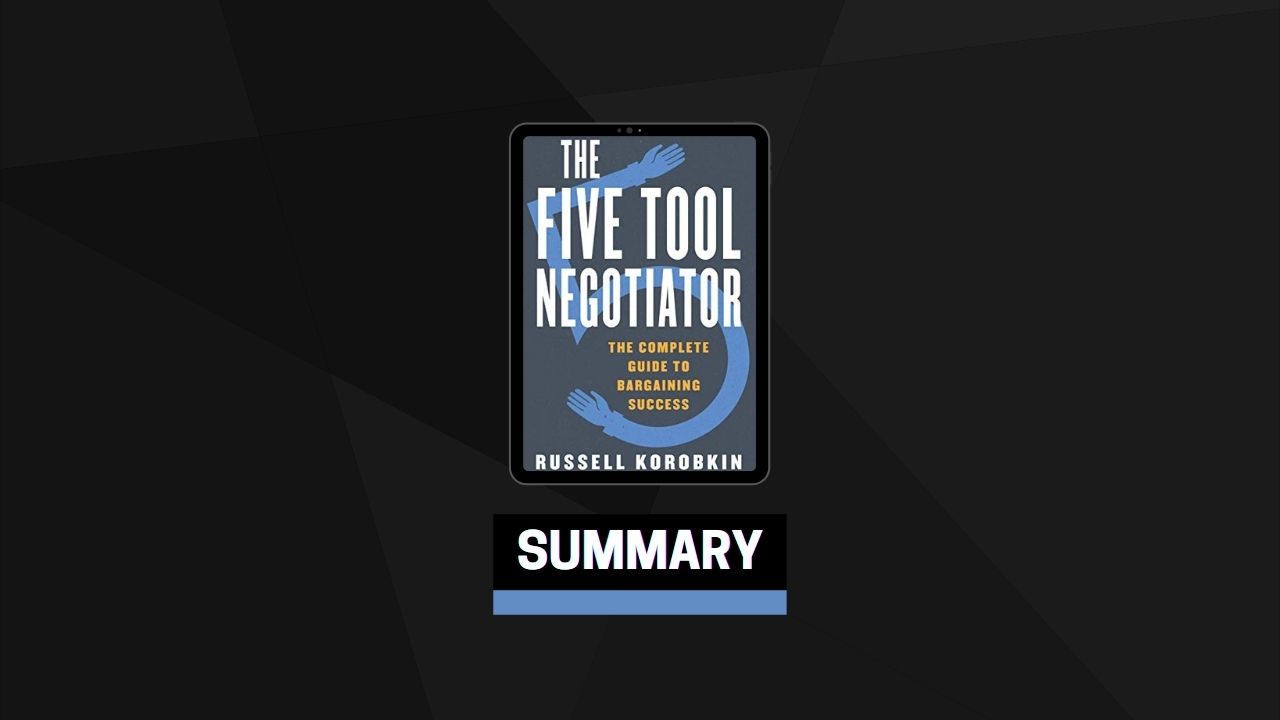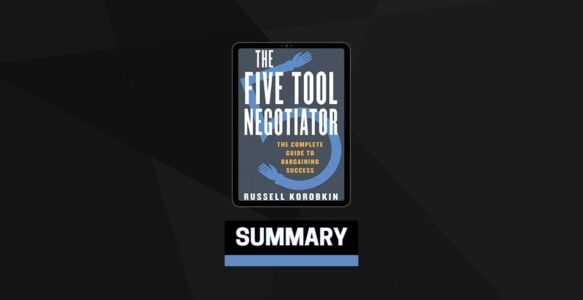From one perspective, negotiation is an almost infinitely complex activity. The subject matter of what we negotiate is as varied as human experience itself, the circumstances surrounding negotiations are never precisely the same, and the most effective strategy for a negotiator to pursue depends on choices made by her counterpart.
But structurally, negotiation is simple: identify the parameters of the bargaining zone, expand the bargaining zone, and divide the cooperative surplus. There are five tools that can help you do this and obtain the best possible outcome given the constraints of the situation
Tool #1, Bargaining Zone Analysis
Bargaining Zone Analysis enables the negotiator to identify the range of potential agreements that would make both parties better off than an impasse. By setting her own reservation point appropriately, the negotiator ensures that the decision of whether to enter into an agreement is made correctly and thus avoids committing either of the two cardinal sins of negotiation: agreeing to a deal that makes her worse off than an impasse or failing to make a deal that would make her better off than an impasse. By estimating the counterpart’s reservation point as accurately as possible, the negotiator can make wiser judgments about whether and how to use the other tools. If there is no bargaining zone initially, Persuasion and Deal Design might help to create one. If there is a large bargaining zone, Power and Fairness Norms can be used more aggressively to attempt to capture as much cooperative surplus as possible.
Tool #2, Persuasion
Persuasion enables the negotiator to convince her counterpart that reaching agreement would be more desirable than the counterpart previously realized. This has the effect of shifting the counterpart’s reservation point, creating a bargaining zone when otherwise there would not have been one and making agreement possible, or expanding an existing bargaining zone and creating more cooperative surplus than would otherwise be available.
Tool #3, Deal Design
Deal Design allows the negotiator to structure an agreement to maximize the amount of total cooperative surplus it will produce. Whereas Persuasion expands the size of the bargaining zone by changing perceptions of value, Deal Design creates additional value by structuring the agreement in a mutually profitable way. By adding issues, subtracting issues, or logrolling, the reservation points of both negotiators change to reflect what is fundamentally a different agreement with a larger bargaining zone.
The first three tools enable the negotiator to identify, shift, and reposition the bargaining zone in ways that both increase the likelihood of agreement and pave the way for the negotiator to capture the most cooperative surplus possible. But none of these tools by itself will guarantee that the negotiator will capture any particular amount of the available cooperative surplus. Reaching an agreement that falls within the bargaining zone requires that the negotiator convince her counterpart not only that there is a bargaining zone but also that he should be willing to accept a particular division of the cooperative surplus.
Tool #4, Power
Power enables the negotiator to capture cooperative surplus by using a threat, either implicit or explicit, that she will not accept an agreement unless the counterpart makes the concessions demanded. The negotiator can make the threat credible by improving her plan B, by convincing the counterpart that her plan B is more desirable than it actually is, or by convincing her counterpart that she is unable or unwilling to accept less cooperative surplus, even though doing so would seem to be in her interest.
Tool #5, Fairness Norms
Fairness Norms allows the negotiator to justify a particular agreement based on social understandings of fairness, which has the effect of dividing available cooperative surplus between the parties. Competing norms—based on fairness between the negotiators, fairness in comparison to other similar negotiating parties, or fairness in the bargaining process—have different implications for the allocation of cooperative surplus, so success depends on convincing one’s counterpart that a particular principle is most appropriate in the particular circumstance
Every tactic that can help a negotiator to obtain the best possible deal uses one of these five tools.
- Understand the negotiation landscape.
- Promote the value of what you have to offer.
- Design the most valuable deal possible.
- Force your counterpart to concede to you most of that value.
- Use finesse to divide the benefits amicably.
These are all the tools of successful negotiation. 5TNs have the complete toolbox at their disposal.
How to Continually Improve Your Skills
Depending on the context, you will choose to focus on some tools more than others. Persuasion is relatively less important with more sophisticated counterparts, who will have carefully analyzed the value to them of reaching an agreement. Deal Design is more useful in negotiations with many issues than in those with just one (such as price). Power is more appropriate in high-stakes or one-time negotiations than in less important negotiations or repeat interactions. Fairness Norms are likely to be more central when ongoing relationships are involved. But there is a role for each of the five tools in any negotiation.
Prior to engaging in your next negotiation, think carefully about how you can use Bargaining Zone Analysis, Persuasion, Deal Design, Power, and Fairness Norms to negotiate the best possible deal. Take out a sheet of paper, divide it into five columns, and make notes in each one as to how, specifically, you can best use the tool. After the negotiation, whether it ends with agreement or impasse, return to that same document and critically evaluate how successful you were in using each tool to your advantage, and determine what you could have done better. Then incorporate those insights into your preparation for your next negotiation.


